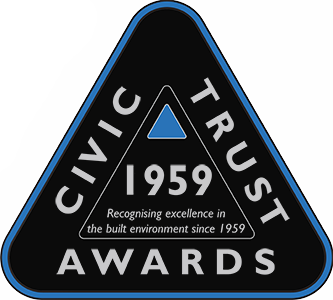Bristol Beacon
Bristol, City of, South West
The transformation of Bristol’s iconic Beacon Hall is a remarkable achievement that not only restores a Grade II-listed building but has reimagined it as a versatile, accessible hub for music and education, serving the entire city and beyond. Original Victorian walls, with their rich Bristol Byzantine Style, have been carefully preserved and lined with acoustically diffusive brickwork to enhance the sound quality for unamplified performances. The new additions, including lightweight steel and timber elements, are seamlessly integrated into the historic structure, creating an elegant contrast that respects the building’s heritage while providing the modern functionality required by today’s performers and audiences. The architectural interventions allow for exceptional sound quality, whether for classical music, rock concerts, or emerging artists. In addition, the restoration of Lantern Hall has reinstated original proportions and windows, further opening the building up to the city and offering a flexible space for a wide variety of events. Original materials and fabric have been reused wherever possible, reducing embodied carbon and retaining the building’s historic integrity. Additionally, the installation of over 600m² of photovoltaic panels supports the building’s energy needs, and a comprehensive adaptation to climate change strategy ensures the building is prepared for future challenges. The conversion of the historic cellars into education and creative spaces demonstrates the innovative reuse of underutilized areas, transforming them into practice rooms, a recording studio, and a small venue for emerging artists. Enabling the development of local talent and expanding the musical ecosystem in Bristol. Consultation with local access forums, disabled musicians, and music students has ensured the venue is usable by everyone. Level access is provided throughout, with multiple lifts, automatic doors and clear signage, making it easy for all visitors to navigate. Wheelchair spaces, alongside companion seating is available in all three auditoria and additional accessible toilets, including a Changing Places WC has been provided. For performers, backstage areas now include accessible dressing rooms, sanitary facilities, direct access to the stage and a dedicated backstage lift. The sensitive restoration of the building, combined with an unwavering commitment to accessibility, has created a world-class venue that will serve the community and cultural sector for generations to come.
Judges’ Comments:
“A stunning example of how a historic building can be transformed to meet modern needs while retaining its cultural and architectural significance. By revitalising this treasured landmark, the project has ensured that Bristol remains a leading city for music, education, and artistic innovation.”
Photography Credits & Captions
Overall Result
Award
Application Type
CTA
Primary Use Class
F1(e) Public halls or exhibition halls
Secondary Use Class
None
Credits
Architect
Levitt Bernstein
Client
Bristol City Council
Client
Bristol Music Trust
Project Manager
Arcadis
Quantity Surveyor
AECOM
Main Contractor
Wilmott Dixon
Contractor's Architects
Alec French Architects
Acousticians
Sound Space Vision
Theatre Consultant
Charcoalblue
Structural Engineer
Arup
M&E Engineers
Arup
Fire Engineering
Arup
Heritage Consultant
Alan Baxter
Access Consultant
Attitude is Everything
Catering Consultant
Kendrick Hobbs
Public Art Consultant
Field Art Projects
